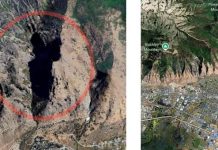
NEW YORK, March 17 (UPI) — Scientists have identified fragments of Neanderthal and Denisovan DNA among the genomes of modern Melanesian people.
Scientists at Binghamton University in New York sequenced the genomes of 35 residents of the remote equatorial islands of Melanesia and compared them to DNA extracted from ancient remains of Denisovans and Neanderthals.
“I’m surprised that these Neanderthal and Denisovan genomes made it out to this remote place,” Andrew Merriwether, a molecular anthropologist at Binghamton, said in a news release.
“We know people have been there for at least 48,000 years because we find human remains that go back that far, but no one has ever been able to connect them to any other place.”
“When you compare most of their genome sequences, they don’t cluster with any other group,” Merriwether added. “They’ve been there and been isolated for a very, very long time.”
The genetic overlap of between the ancient hominins and modern Melanesians measured between 1.9 and 3.4 percent. Previous studies have found 2 percent overlap among modern non-African lineages.
The latest evidence suggests modern humans and early human relatives interbred on at least three separate occasions.
More interesting, perhaps, than interspecies mating, is the question of how Denisovans made their way to the tiny, faraway islands of Melanesia. That’s the question the most intrigues Merriwether.
He thinks more studies like his latest — published in the journal Science — will ultimately provide answers.
“Most people know back a few generations, maybe five generations,” Merriwether said, “but where did we come from before that? That’s what we want to find out.”





